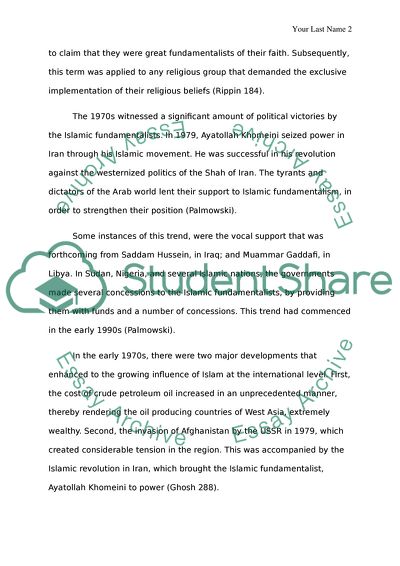Cite this document
(Rise of Islamic Fundamentalism in the Latter Part of the 20th Century Term Paper, n.d.)
Rise of Islamic Fundamentalism in the Latter Part of the 20th Century Term Paper. Retrieved from https://studentshare.org/religion-and-theology/1560629-account-for-the-rise-of-islamic-fundamentalism-in-the-latter-part-of-the-20th-century
Rise of Islamic Fundamentalism in the Latter Part of the 20th Century Term Paper. Retrieved from https://studentshare.org/religion-and-theology/1560629-account-for-the-rise-of-islamic-fundamentalism-in-the-latter-part-of-the-20th-century
(Rise of Islamic Fundamentalism in the Latter Part of the 20th Century Term Paper)
Rise of Islamic Fundamentalism in the Latter Part of the 20th Century Term Paper. https://studentshare.org/religion-and-theology/1560629-account-for-the-rise-of-islamic-fundamentalism-in-the-latter-part-of-the-20th-century.
Rise of Islamic Fundamentalism in the Latter Part of the 20th Century Term Paper. https://studentshare.org/religion-and-theology/1560629-account-for-the-rise-of-islamic-fundamentalism-in-the-latter-part-of-the-20th-century.
“Rise of Islamic Fundamentalism in the Latter Part of the 20th Century Term Paper”, n.d. https://studentshare.org/religion-and-theology/1560629-account-for-the-rise-of-islamic-fundamentalism-in-the-latter-part-of-the-20th-century.


